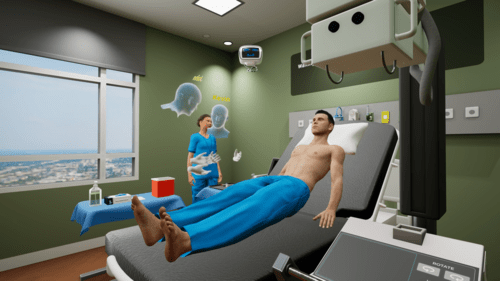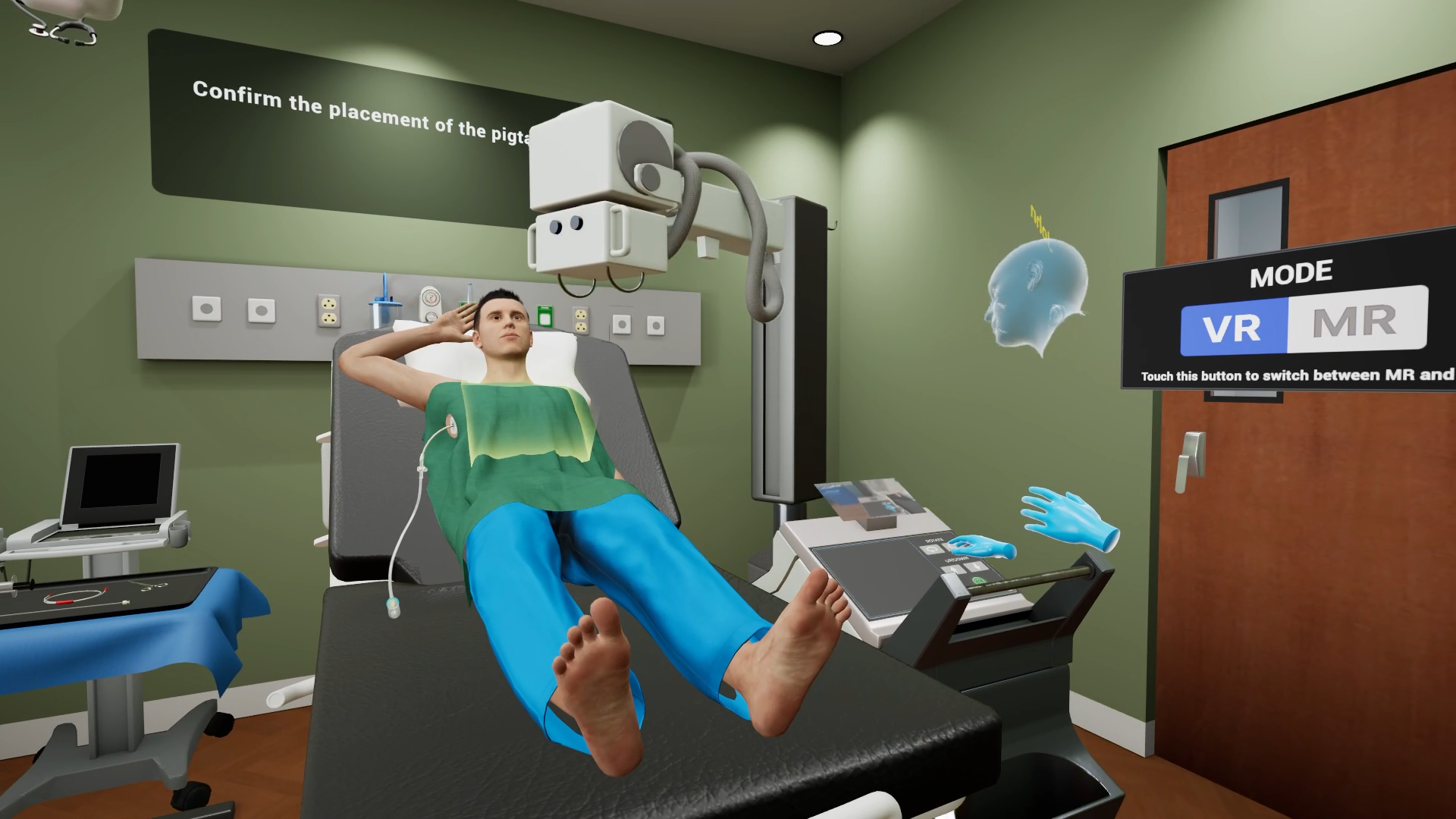Thoracentesis
Thoracentesis refers to the procedure performed to aspirate fluid from the pleural space. This could be done for diagnostic or therapeutic purposes. In this given case, the patient has pneumothorax, calling for a thoracentesis procedure.
This VR simulation for Thoracentesis is designed to provide practitioners with realistic practice opportunities in performing the procedure with a virtual patient in a virtual environment. With both training and assessment modes, learners can perform the procedure and assess themselves on their performance.
- Enforcing the importance of landmarking and the “safe triangle” during thoracentesis
- Utilization of bedside ultrasound for improved safety during thoracentesis
- Demonstrate the surgical steps necessary to perform thoracentesis

- American Thoracic Society. (2021). Guidelines for thoracentesis
Customize Your Program
Get rid of the editor. Adopt in-VR customization.
MedVR Education is bringing to you in-VR customization that will enable you to customize your procedural simulations by making selections from a range of feature choices.
- Select patient from a diverse background
- Choose preferred virtual environment
- Select equipment used in the procedure
- Modify difficulty level of the assessment mode
- …..many more to come

 Multi-playerSessions
Multi-playerSessions Physics-based Interactions
Physics-based Interactions
Core Skills Training

Performing Thoracentesis
As a part of this Thoracentesis procedure, the learner will begin by confirming the correct side of the pneumothorax and marking the needle insertion site. After donning sterile gloves, the instrument for pigtail insertion will be prepared followed by inserting the needle, passing the guidewire and making an incision adjacent to the guidewire. Subsequently the pigtail and introducer will be passed over the wire making sure that the last side hole is within the pleural space. The learner will confirm the placement of the pigtail by an Xray. All necessary affordances are provided to complete the procedure with efficiency.
Training
With prompts, guidance and affordances learners are hand-held through the process to practice the procedure in a virtual environment with a virtual patient.
- Photorealistic virtual environment
- Physics-based interactions
- Detailed instructions
- Adequate affordances to assist in task completion

Assessment
Test acquired skills to perform the procedures from start to finish without prompts. An incorrect step will take the learner back to the start to start afresh.
- Live scoring
- Instant feedback
- Adequate affordances for efficient performance
- Time tracking to monitor activity completion







